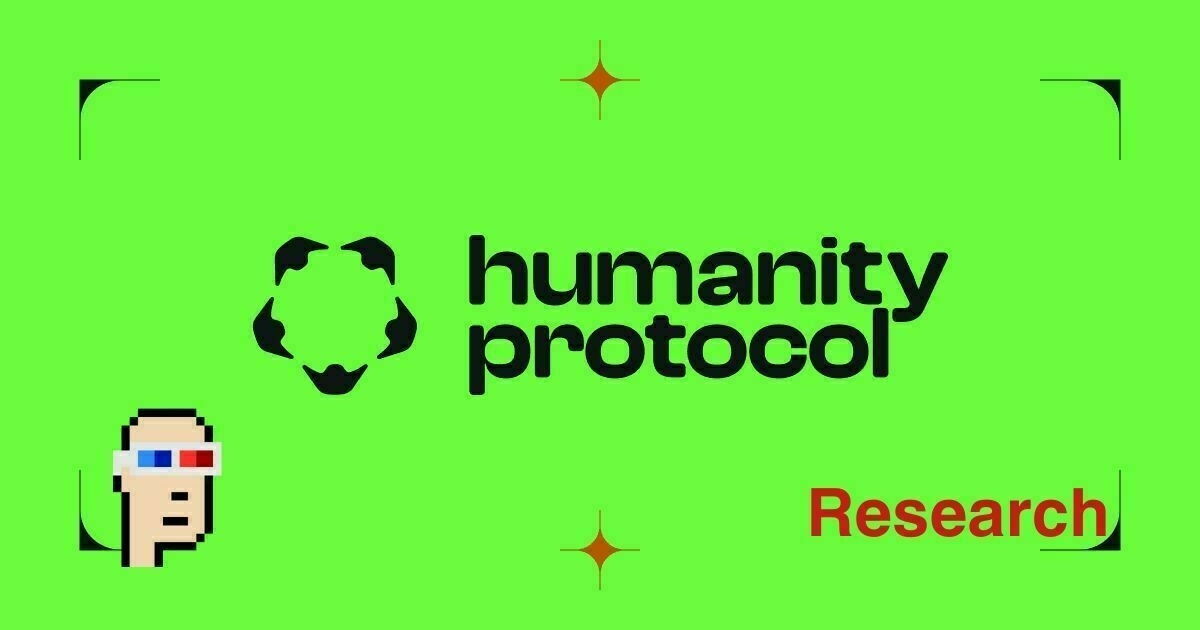Humanity Protocol: Prove You're Human, Own Your Identity
Friday, May 16, 2025
Imagine a world where you can prove you’re a real person online without sharing your private info - like your name, address, or ID. Humanity Protocol is a new kind of digital ID system that does precisely that. It uses a simple palm scan on your smartphone to create a unique, secure ‘Human ID’ that proves you’re human, not a bot or a scammer, while keeping your personal details private.
Humanity Protocol is a decentralized, privacy-focused digital identity verification system built on a layer-2 blockchain, primarily using zero-knowledge proofs (ZKPs) and palm recognition technology to establish Proof of Humanity (PoH).
Users scan their palm to create a unique ‘Human ID,’ a self-sovereign identity (SSI) that allows secure, private access to Web3 applications and services while maintaining control over their data. The protocol employs a Proof-of-Humanity consensus mechanism, ensuring Sybil resistance and enabling verifiable credentials for things like age, education, or financial identity.
Humanity Protocol addresses several key problems in the digital and Web3 ecosystems:
- Bot and Sybil Attacks - Humanity Protocol verifies users as real humans using palm recognition and zero-knowledge proofs, preventing bots and duplicate identities from infiltrating platforms, which is critical for fair governance and airdrops
- Privacy Loss in Identity Verification - Traditional KYC processes often require sharing sensitive personal data, risking leaks or misuse. Humanity Protocol’s self-sovereign identity (SSI) model ensures users control their data, sharing only necessary credentials privately via ZKPs
- Online Fraud and Trust Issues - By providing a secure, verifiable Proof of Humanity (PoH), Humanity Protocol reduces fraud in digital interactions, enabling trusted access to services like DeFi, social platforms, or marketplaces without compromising user anonymity
- Centralized Identity Control - Centralized systems often lock users into proprietary identity frameworks. Humanity Protocol’s decentralized approach gives users ownership of their digital identity, usable across Web3 applications without reliance on a single authority
- Accessibility and Inclusion - Humanity Protocol tackles barriers to digital access by offering a low-cost, smartphone-based verification method (palm scanning), making it easier for underbanked or unverified populations to participate in Web3 and access services like financial tools or tokenized assets
Humanity Protocol’s decentralized identity verification system, leveraging palm recognition and zero-knowledge proofs (ZKPs), enables a range of use cases in Web3 and beyond. Here are some of the primary applications:
- Sybil-Resistant Governance in DAOs - Ensures one-person-one-vote systems in Decentralized Autonomous Organizations by verifying unique human identities, preventing manipulation through multiple accounts
- Fair Airdrop Distribution - Allows projects to distribute tokens or rewards only to verified human users, reducing bot exploitation and ensuring equitable allocation in crypto ecosystems
- Fraud Prevention in Marketplaces - Verifies human users in peer-to-peer marketplaces (e.g., NFT or e-commerce platforms), reducing scams and building trust while maintaining user anonymity
- Social Media and Content Platforms - Combats bots and fake accounts by requiring Proof of Humanity (PoH) for participation, enhancing authenticity in discussions, content creation, or reward systems
- Access to Verifiable Credentials - Enables users to prove qualifications (e.g., education, certifications, or creditworthiness) privately across platforms, useful for job markets, lending, or tokenized ecosystems
Join my Web3 Explorers Telegram group for more crypto insights.
